Endangered Species
Subcategories
-
Great Plains 1
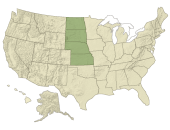 Below Wind Cave National Park in South Dakota, the world’s fourth-longest cave system extends in a maze of passageways filled with boxwork, frostwork and popcorn formations that occupy more than 135 miles. Above ground, a sea of grass gives way to vanilla-scented ponderosa pines.
Below Wind Cave National Park in South Dakota, the world’s fourth-longest cave system extends in a maze of passageways filled with boxwork, frostwork and popcorn formations that occupy more than 135 miles. Above ground, a sea of grass gives way to vanilla-scented ponderosa pines. -
Midwest 1
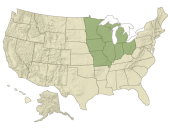 Near the tip of the “little finger” on the Michigan mitt, Sleeping Bear Dunes National Lakeshore offers sweeping views of Lake Michigan, the famous Dune Climb and nesting sites for the endangered Great Lakes population of piping plovers. At the southern tip of Lake Michigan, prickly pear cactuses grow beside Arctic bearberry along the Indiana Dunes National Lakeshore.
Near the tip of the “little finger” on the Michigan mitt, Sleeping Bear Dunes National Lakeshore offers sweeping views of Lake Michigan, the famous Dune Climb and nesting sites for the endangered Great Lakes population of piping plovers. At the southern tip of Lake Michigan, prickly pear cactuses grow beside Arctic bearberry along the Indiana Dunes National Lakeshore. -
Northeast 1
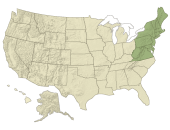 Positioned along the Atlantic migratory flyway, Fire Island National Seashore is prime birding territory in the spring and fall along the 32-mile-long barrier island. The piping plover and the endangered roseate tern breed here every year.
Positioned along the Atlantic migratory flyway, Fire Island National Seashore is prime birding territory in the spring and fall along the 32-mile-long barrier island. The piping plover and the endangered roseate tern breed here every year. -
Northwest 2
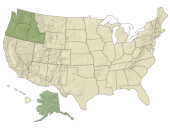 In Washington, the largest unmanaged herd of Roosevelt elk in the nation roams the impossibly green Hoh and Quinault rain forests of Olympic National Park, where annual precipitation can be 12 to 14 feet. Record-setting Sitka spruce and western red cedar are standouts in a forest of giants; when toppled, they can be swept out to sea along the peninsula’s 10 major rivers and then washed ashore as gargantuan pieces of driftwood.
In Washington, the largest unmanaged herd of Roosevelt elk in the nation roams the impossibly green Hoh and Quinault rain forests of Olympic National Park, where annual precipitation can be 12 to 14 feet. Record-setting Sitka spruce and western red cedar are standouts in a forest of giants; when toppled, they can be swept out to sea along the peninsula’s 10 major rivers and then washed ashore as gargantuan pieces of driftwood. -
Rocky Mountains 1
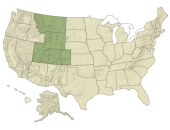 With its million-plus acres of nearly pristine wilderness, Glacier National Park is a haven for grazing ungulates: moose and elk, bighorn sheep and mountain goats. Rarely seen gray wolves furtively hunt their prey. Tourists have a better chance of spotting one of the park’s roughly 300 grizzly bears from the Many Glacier Valley or Logan Pass trails.
With its million-plus acres of nearly pristine wilderness, Glacier National Park is a haven for grazing ungulates: moose and elk, bighorn sheep and mountain goats. Rarely seen gray wolves furtively hunt their prey. Tourists have a better chance of spotting one of the park’s roughly 300 grizzly bears from the Many Glacier Valley or Logan Pass trails. -
Southeast 4
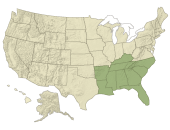 Everglades National Park, the largest remaining subtropical wilderness in the United States, is actually a patchwork of habitats extending from the outskirts of suburban Miami to Florida’s Gulf Coast. With a half-million acres underwater, the park claims the biggest protected mangrove forest in the Western Hemisphere. Combining history with wildlife, the Natchez Trace National Parkway wends its way across 444 miles and three state lines: an 800-foot-wide ribbon of green with a roadway running through it from the foothills of the Appalachians in Tennessee to the bluffs of Natchez, Miss.
Everglades National Park, the largest remaining subtropical wilderness in the United States, is actually a patchwork of habitats extending from the outskirts of suburban Miami to Florida’s Gulf Coast. With a half-million acres underwater, the park claims the biggest protected mangrove forest in the Western Hemisphere. Combining history with wildlife, the Natchez Trace National Parkway wends its way across 444 miles and three state lines: an 800-foot-wide ribbon of green with a roadway running through it from the foothills of the Appalachians in Tennessee to the bluffs of Natchez, Miss. -
Southwest 2
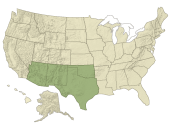 Big Bend National Park encapsulates the seeming contradiction of a harsh desert teeming with life. The largest protected swath of Chihuahuan Desert in the United States, the 800,000-acre Big Bend borders the Rio Grande in southwestern Texas and rises in elevation from less than 2,000 feet to nearly 8,000 feet. The park’s aerial menagerie is unsurpassed in the nation, with confirmed sightings of more than 450 bird species, 180 butterfly species and 20 species of bat.
Big Bend National Park encapsulates the seeming contradiction of a harsh desert teeming with life. The largest protected swath of Chihuahuan Desert in the United States, the 800,000-acre Big Bend borders the Rio Grande in southwestern Texas and rises in elevation from less than 2,000 feet to nearly 8,000 feet. The park’s aerial menagerie is unsurpassed in the nation, with confirmed sightings of more than 450 bird species, 180 butterfly species and 20 species of bat. -
West 3
 Hawaii Volcanoes National Park boasts living marvels found nowhere else on earth. Visitors can spot a showy Kamehameha butterfly by mamaki trees, and admire one of Hawaii Island’s rarest plants, the hibiscus-like hau kuahiwi. In all, the park hosts 26 endangered or threatened endemic plant species, including the Mauna Loa silversword. Golden Gate National Recreational Area, the nation’s largest urban park, also has among the highest number of endangered plant and animal species. Teeming tidal pools and more than 100 sea caves stud the rocky California coast, where brown pelicans dive for dinner.
Hawaii Volcanoes National Park boasts living marvels found nowhere else on earth. Visitors can spot a showy Kamehameha butterfly by mamaki trees, and admire one of Hawaii Island’s rarest plants, the hibiscus-like hau kuahiwi. In all, the park hosts 26 endangered or threatened endemic plant species, including the Mauna Loa silversword. Golden Gate National Recreational Area, the nation’s largest urban park, also has among the highest number of endangered plant and animal species. Teeming tidal pools and more than 100 sea caves stud the rocky California coast, where brown pelicans dive for dinner.

